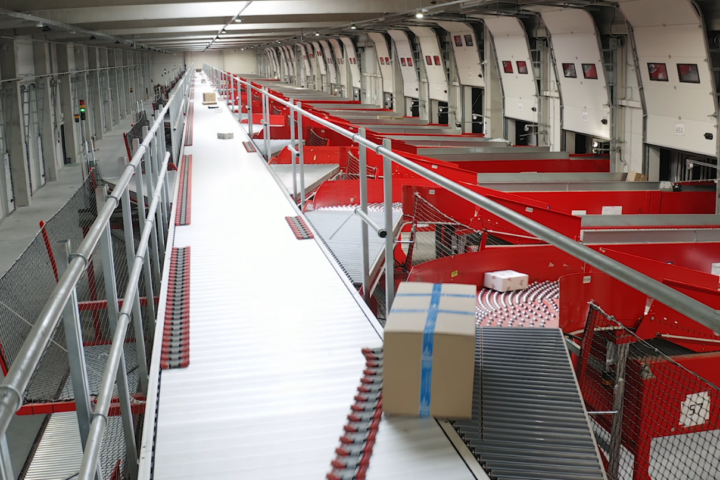There’s a lot at stake when it comes to trucking compliance in the USA, impacting your business’s reputation and bottom line. Adhering to federal regulations and state laws is crucial for avoiding costly fines and ensuring safe operations. In this guide, you’ll discover effective strategies to streamline your compliance processes, maintain accurate records, and stay updated on regulatory changes. By implementing these proven methods, you’ll enhance your operational efficiency and safeguard your business’s future.
Key Takeaways:
- Establish a robust compliance program that includes regular training for staff on federal and state regulations affecting trucking operations.
- Utilize technology and software solutions to streamline compliance processes, ensuring accurate tracking of necessary documentation and deadlines.
- Perform periodic audits and reviews to identify potential compliance gaps and implement corrective actions promptly to maintain regulatory adherence.
Types of Trucking Compliance
Your understanding of the different types of trucking compliance is imperative for maintaining smooth operations. Compliance in the trucking industry typically falls into two categories: federal regulations and state regulations. Each type plays a significant role in ensuring that your operations adhere to legally mandated standards. To effectively navigate these regulations, consider the following:
| Type of Compliance | Description |
|---|---|
| Federal Regulations | Guidelines set by the federal government applicable nationwide. |
| State Regulations | Rules established by individual states, which may vary significantly. |
| Safety Compliance | Standards that ensure safe operation and vehicle maintenance. |
| Environmental Compliance | Regulations governing emissions and environmental impacts. |
| Operational Compliance | Policies related to driver behavior and operational practices. |
Federal Regulations
Compliance with federal regulations is a fundamental aspect of successfully running a trucking business in the USA. These regulations encompass a wide array of standards set forth by the Federal Motor Carrier Safety Administration (FMCSA) aimed at ensuring safety and accountability within the industry. Key components include hours of service rules, vehicle maintenance standards, and the requirements for driver qualifications. By effectively adhering to these regulations, you can significantly reduce the risks of fines, penalties, and accidents.
Moreover, federal regulations set the groundwork for interstate trucking, ensuring that you are compliant when operating across state lines. This includes maintaining accurate records, conducting regular vehicle inspections, and properly training your drivers to meet federal standards. Your commitment to federal compliance not only promotes safety but also enhances your company’s credibility with partners and customers.
State Regulations
One of the significant challenges you will face is navigating state regulations, which can differ markedly from one jurisdiction to another. Each state has the authority to enact its own laws concerning transportation, leading to a variety of requirements you must comply with. While some regulations may align with federal standards, others could be more stringent. Your ability to stay informed about these laws is vital to avoid legal complications and maintain efficient operations.
With most states issuing their own set of compliance rules, it is imperative to conduct thorough research on the specific regulations that pertain to your trucking operations. This includes understanding local permits, tax obligations, and safety inspections that may not necessarily fall under federal law. Being diligent about state compliance not only helps you avoid hefty fines but also fosters a positive reputation within the communities you serve.
After understanding both federal and state regulations, your foundation for successful trucking compliance will be significantly strengthened.
Key Factors in Trucking Compliance
Some of the vital aspects that contribute to successful trucking compliance include the following:
- Driver Qualifications
- Vehicle Maintenance
- Hours of Service Regulations
- Licensing and Registration
- State and Federal Regulations
By addressing these key factors, you can ensure that your trucking operations adhere to the various standards and regulations set forth by federal and state authorities. It is necessary to stay informed about these requirements to avoid costly penalties and maintain a good reputation in the industry. Recognizing the importance of these factors will guide your compliance efforts effectively.
Driver Qualifications
Now, ensuring that your drivers meet the necessary qualifications is fundamental to your trucking compliance. Each driver needs to possess a valid commercial driver’s license (CDL) appropriate for the vehicle they will operate. Additionally, they must complete background checks, driving assessments, and ongoing training to maintain their qualifications. In some cases, drivers may also need special endorsements, particularly when transporting hazardous materials. By carefully reviewing and updating your drivers’ qualifications, you can significantly reduce the risks associated with compliance violations.
Moreover, maintaining comprehensive records of your drivers’ training and certifications is necessary. This documentation not only demonstrates compliance but also serves as a protective measure against potential audits. Additionally, providing regular training on safety and regulatory changes keeps your drivers informed and prepared. By focusing on continuously developing your drivers’ skills, you enhance your compliance efforts and create a safer work environment.
Vehicle Maintenance
Any trucking company must implement a stringent vehicle maintenance program to achieve compliance and ensure safety on the road. Regular inspections and servicing of your fleet are necessary to meet the standards set by the Federal Motor Carrier Safety Administration (FMCSA). This involves checking necessary components such as brakes, tires, lights, and steering systems. By maintaining your vehicles in good working order, you can prevent breakdowns and accidents that could lead to violations.
Understanding that regular maintenance not only keeps your fleet safe but also maximizes operational efficiency is key to successful trucking compliance. It is vital to establish a routine maintenance schedule and document all assessments and repairs performed on each vehicle. This not only guarantees that your vehicles are compliant with government regulations but also helps identify issues before they escalate into serious problems. Additionally, a well-maintained fleet contributes to positive driver morale and lowers the likelihood of costly delays, ultimately benefiting your business’s bottom line.
Step-by-Step Guide to Achieving Compliance
Keep your trucking business on the right side of regulations by following this step-by-step guide. Achieving compliance requires a systematic approach that includes careful assessment, implementation of effective strategies, and regular evaluations. Below, you’ll find a structured plan to guide you through each stage effectively.
Table: Steps to Achieve Compliance
| Steps | Actions |
|---|---|
| 1. Initial Assessment | Conduct a thorough evaluation of your current compliance status. |
| 2. Implementation of Compliance Strategies | Develop and apply strategies to meet all regulatory requirements. |
| 3. Continuous Monitoring | Regularly review compliance measures to ensure ongoing adherence. |
Initial Assessment
Assessment of your current compliance level is the first step toward achieving regulatory adherence. This initial evaluation should focus on understanding what regulations apply to your specific trucking operations, including hours of service, vehicle maintenance, and driver’s qualifications. By identifying discrepancies, you can prioritize areas that need immediate attention.
After assessing your compliance status, you should document your findings. This documentation will serve as the foundation for addressing issues and implementing necessary changes. Conducting interviews with your team can also provide insights into gaps in knowledge or procedures that may affect compliance, allowing you to tackle these issues holistically.
Implementation of Compliance Strategies
Assessment of your compliance gaps should lead you to develop a comprehensive strategy aimed at closing those gaps. Start by creating clear policies and procedures that reflect compliance regulations. Training your team on these policies will not only ensure that they understand their responsibilities but will also help in cultivating a culture of safety and compliance within your organization.
Guide your business through the implementation phase by setting specific, measurable objectives linked to compliance. Regularly communicate these goals with your team to maintain awareness and engagement. Additionally, consider investing in compliance management tools that can help streamline processes, track deadlines, and keep your documentation organized. This proactive approach to compliance can significantly reduce the risk of potential violations and enhance the overall performance of your trucking operations.
Tips for Maintaining Compliance
After establishing a solid foundation in trucking compliance, it’s crucial to adopt ongoing practices that maintain your operations in adherence to regulations. Effective compliance not only reflects on your business’s reputation but also serves as a protective measure against fines and legal issues. Here are some actionable tips to help you sustain compliance:
- Conduct regular audits of your safety practices and procedures.
- Stay current with changes in federal and state transport laws.
- Implement a system for tracking driver hours and vehicle maintenance.
- Utilize technology to streamline compliance management.
- Establish clear communication channels with your team regarding compliance policies.
This approach will create a culture of accountability and awareness, resulting in smoother operations and peace of mind.
Regular Training Programs
Some of the best ways to ensure compliance in your trucking operations involve ongoing education and training for you and your employees. Regular training programs are key to staying updated with evolving industry standards and regulations. Offering comprehensive sessions that cover topics such as hours of service regulations, safety protocols, and vehicle maintenance not only prepares your team but also reinforces a commitment to compliance.
Notably, being proactive about training can greatly reduce the likelihood of violations. It’s important to engage your drivers in hands-on workshops and simulations that reflect real-world situations they may encounter. This practice not only sharpens their skills but also instills confidence in their ability to adhere to federal regulations.
Document Management Practices
Regular documentation is crucial in maintaining compliance in your trucking operation. You must ensure that records of driver qualifications, vehicle inspections, and maintenance logs are meticulously kept and easily accessible. Implementing an organized document management system will reduce time spent searching for information and ensure you are ready for roadside inspections or compliance audits at any time.
Plus, delegating responsibilities to specific team members for managing compliance documentation ensures that no record-keeping detail is overlooked. Make use of digital solutions to encrypt and back up vital information securely. Neglecting documentation can lead to serious consequences, including hefty fines or safety incidents due to lack of information. Establish a clear intake and maintenance procedure for all compliance-related documents, ensuring that every detail is documented and available at a moment’s notice. This proactive stance will not only streamline operations but also mitigate risks associated with non-compliance.
Pros and Cons of Various Compliance Strategies
To make informed decisions regarding compliance strategies in the trucking industry, it’s necessary to weigh the pros and cons of each approach. Different strategies can yield varying results based on your operational needs, financial constraints, and overall business goals. Below is a breakdown of the advantages and disadvantages that you may encounter when selecting compliance strategies for your trucking operations:
| Pros | Cons |
|---|---|
| Improved safety standards | Potentially high implementation costs |
| Reduced risk of fines and penalties | Time-consuming to establish |
| Enhanced reputation with clients | May require ongoing training and updates |
| Streamlined operational processes | Dependence on technology can be risky |
| Improved employee morale and training | Possible pushback from staff adjustment |
| Access to better insurance rates | Changes in regulations can impact strategies |
| Facilitated cross-state operations | Complexity of managing multiple strategies |
| Long-term financial savings | Initial disruption to daily operations |
| Ability to attract partnerships | Resource-intensive with required documentation |
| Alignment with industry best practices | Limited awareness of certain strategies |
Cost-Effectiveness
You need to assess the cost-effectiveness of your compliance strategies thoroughly. While some methods may entail high initial investments, the long-term benefits can often surpass these upfront costs. For instance, investing in training programs can enhance your employees’ skills, leading to better compliance and fewer accidents, which ultimately save money on insurance and legal fees.
On the other hand, implementing compliance strategies that are low-cost but less effective may result in unforeseen expenses down the line. You want to ensure that the strategies you select not only fit within your budget but also provide significant returns on investment. Balancing your expenses with your operational compliance goals is key to maintaining a sustainable business.
Impact on Operational Efficiency
Clearly, the impact of compliance strategies on operational efficiency cannot be overstated. You may find that the right compliance measures streamline workflows and reduce downtime. However, it’s important to recognize that the implementation process can temporarily disrupt daily operations as your team adjusts to new protocols.
Pros of efficient compliance include enhanced productivity, as your team spends less time dealing with regulatory issues and more time focusing on delivering top-notch service. Adopting comprehensive compliance strategies ensures that your operations run smoothly, with less likelihood of operational interruptions. You’ll want to evaluate how these strategies will increase efficiency and ultimately benefit your bottom line, as the right choices can lead to higher profitability and smoother workflow integration.
Common Compliance Pitfalls to Avoid
Record-Keeping Mistakes
Compliance failures can often stem from inadequate record-keeping practices. All your documentation should be meticulously organized and easily accessible, as this can make or break your operations during audits. Failing to maintain accurate logs for driver hours, vehicle inspections, and maintenance records can lead to hefty fines and operational disruptions. You should routinely review your record-management systems to ensure they align with Federal Motor Carrier Safety Administration (FMCSA) regulations.
Inadequate Training
Even with the best compliance systems in place, the effectiveness of your operation hinges on the training provided to your team. Without proper training, your drivers and employees may not fully understand compliance requirements, increasing the risk of violations. Regular training sessions should emphasize safety protocols, hours-of-service rules, and communication of important regulatory changes to keep everyone aligned. Consider providing refresher courses to keep compliance at the forefront of your team’s priorities.
Training should not be viewed as a one-time event, but rather as an ongoing commitment to excellence. Your team needs to be well-versed in the laws affecting trucking operations, including the interstate commerce regulations and hazardous materials handling. By investing time in comprehensive training, you foster a culture of accountability and safety that can lead to fewer violations and, ultimately, a more successful trucking operation.
Summing up
The journey towards successful trucking compliance in the USA requires your commitment to understanding and implementing the various regulations that govern the industry. By proactively engaging with tools such as fleet management software, staying up-to-date with the latest safety standards, and fostering a culture of compliance among your drivers, you fortify your operations against potential pitfalls. It’s vital that you develop a comprehensive compliance program that includes regular training and open communication with your team, ensuring everyone is aware of their responsibilities.
Your roadmap to compliance doesn’t end with meeting the minimum requirements; it involves continuous improvement and adaptation to changes in laws and market conditions. By prioritizing thorough documentation, regular audits, and embracing technology solutions that help streamline processes, you can create a resilient framework for your trucking business. Ultimately, your dedication to compliance will not only enhance your reputation but also position your company for long-term success in the competitive trucking landscape.
FAQ
Q: What are the key regulations that trucking companies must comply with in the USA?
A: Trucking companies in the USA must adhere to various regulations set by the Federal Motor Carrier Safety Administration (FMCSA). Key regulations include hours of service (HOS) rules, which dictate the amount of time drivers can spend on the road and off duty, and vehicle maintenance standards that ensure safe operating conditions. Additionally, trucking companies must comply with electronic logging device (ELD) requirements, insurance mandates, and state-specific regulations regarding vehicle licensing and operation. Staying informed about these regulations is important for maintaining compliance.
Q: How can a trucking company effectively implement compliance training for its drivers?
A: Implementing effective compliance training involves creating a structured program that covers all relevant regulations, including safety procedures, reporting requirements, and the use of ELDs. Training can include in-person workshops, online courses, and practical demonstrations. It is beneficial to schedule regular refresher courses and have open discussions with drivers about compliance challenges they face. Additionally, providing access to resources, such as compliance manuals and regulatory updates, can help reinforce the knowledge and skills necessary for maintaining compliance on the road.
Q: What are some tools and technologies that can aid in achieving trucking compliance?
A: Several tools and technologies can assist trucking companies in achieving compliance. Electronic Logging Devices (ELDs) are important for tracking hours of service and ensuring adherence to HOS regulations. Fleet management software can help monitor vehicle maintenance schedules, driver behavior, and safety performance metrics. Compliance management systems can keep track of documentation and assist in automating reminders for regulatory deadlines. Additionally, mobile apps can facilitate real-time communication of compliance-related information between drivers and management, ensuring everyone stays informed and accountable.

















